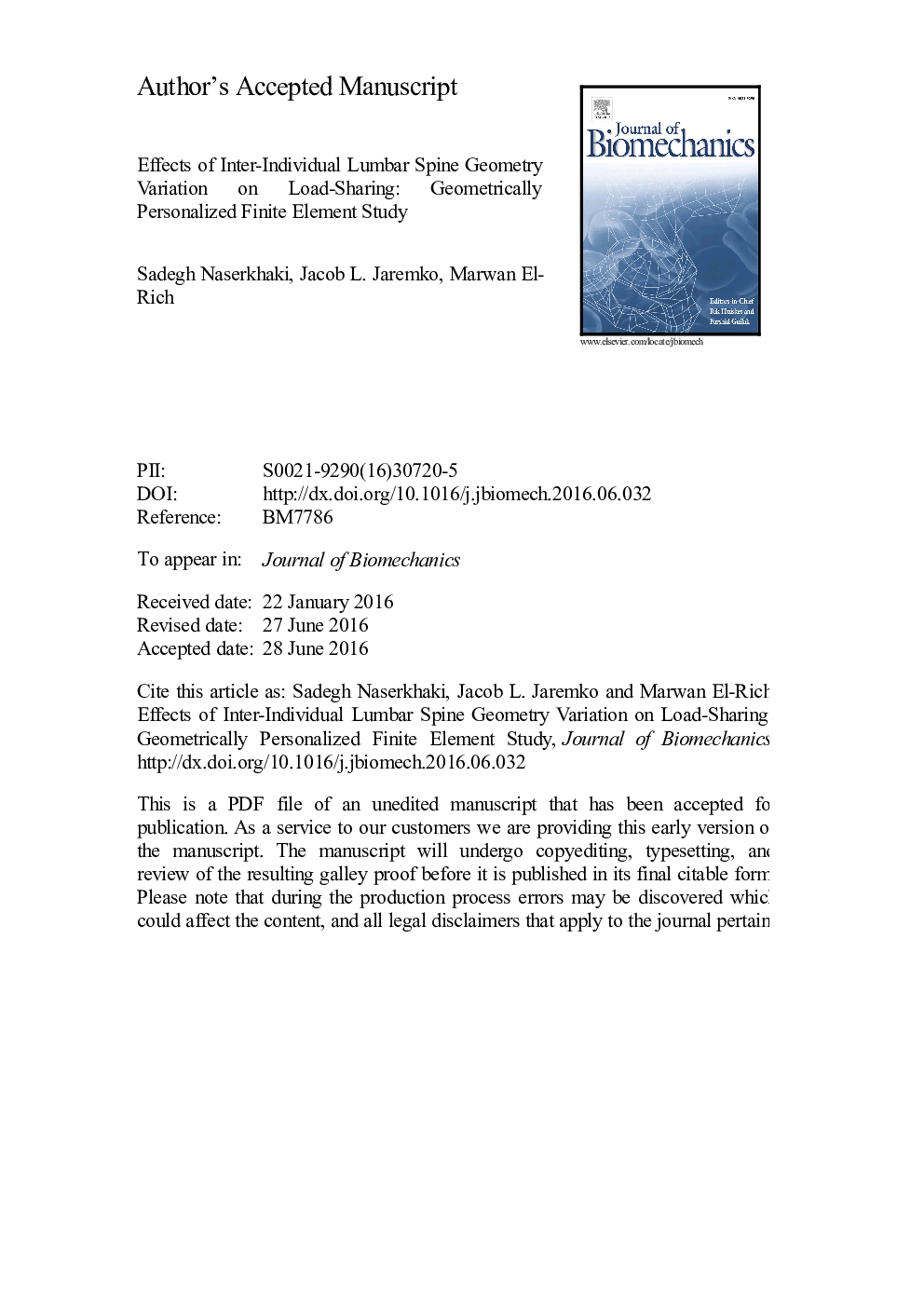| Article ID | Journal | Published Year | Pages | File Type |
|---|---|---|---|---|
| 5032469 | Journal of Biomechanics | 2016 | 32 Pages |
Abstract
There is a large, at times contradictory, body of research relating spinal curvature to Low Back Pain (LBP). Mechanical load is considered as important factor in LBP etiology. Geometry of the spinal structures and sagittal curvature of the lumbar spine govern its mechanical behavior. Thus, understanding how inter-individual geometry particularly sagittal curvature variation affects the spinal load-sharing becomes of high importance in LBP assessment. This study calculated and compared kinematics and load-sharing in three ligamentous lumbosacral spines: one hypo-lordotic (Hypo-L) with low lordosis, one normal-lordotic (Norm-L) with normal lordosis, and one hyper-lordotic (Hyper-L) with high lordosis in flexed and extended postures using 3D nonlinear Finite Element (FE) modeling. These postures were simulated by applying Follower Load (FL) combined with flexion or extension moment. The Hypo-L spine demonstrated stiffer behavior in flexion but more flexible response to extension compared to the Norm-L spine. The excessive lordosis stiffened response of the Hyper-L spine to extension but did not affect its resistance to flexion compared to the Norm-L spine. Despite the different resisting actions of the posterior ligaments to flexion moment, the increase of disc compression was similar in all the spines leading to similar load-sharing. However, resistance of the facet joints to extension was more important in the Norm- and Hyper-L spines which reduced the disc compression. The spinal curvature strongly influenced the magnitude and location of load on the spinal components and also altered the kinematics and load-sharing particularly in extension. Consideration of the subject-specific geometry and sagittal curvature should be an integral part of mechanical analysis of the lumbar spine.
Keywords
Related Topics
Physical Sciences and Engineering
Engineering
Biomedical Engineering
Authors
Sadegh Naserkhaki, Jacob L. Jaremko, Marwan El-Rich,
